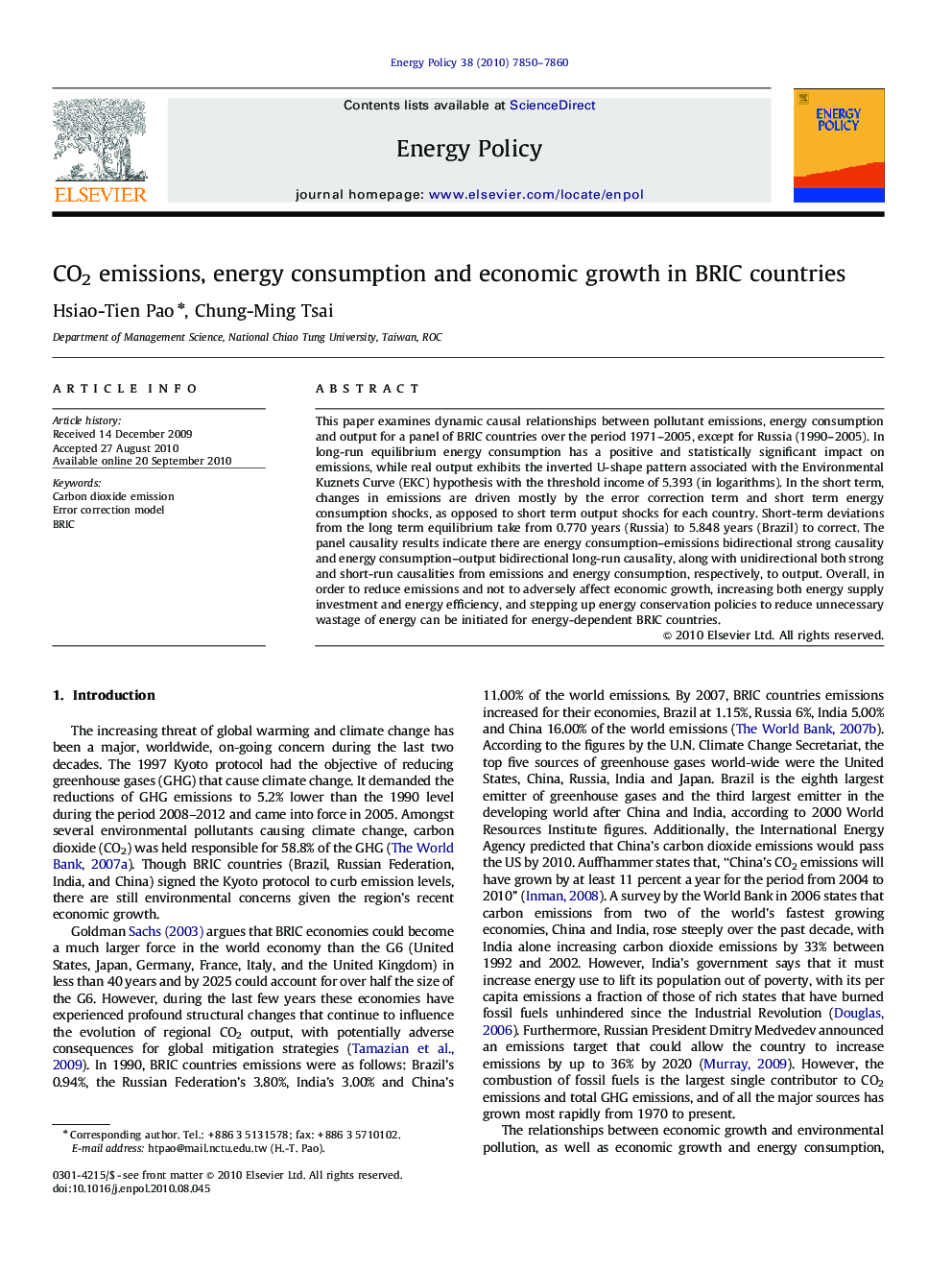| Article ID | Journal | Published Year | Pages | File Type |
|---|---|---|---|---|
| 996203 | Energy Policy | 2010 | 11 Pages |
This paper examines dynamic causal relationships between pollutant emissions, energy consumption and output for a panel of BRIC countries over the period 1971–2005, except for Russia (1990–2005). In long-run equilibrium energy consumption has a positive and statistically significant impact on emissions, while real output exhibits the inverted U-shape pattern associated with the Environmental Kuznets Curve (EKC) hypothesis with the threshold income of 5.393 (in logarithms). In the short term, changes in emissions are driven mostly by the error correction term and short term energy consumption shocks, as opposed to short term output shocks for each country. Short-term deviations from the long term equilibrium take from 0.770 years (Russia) to 5.848 years (Brazil) to correct. The panel causality results indicate there are energy consumption–emissions bidirectional strong causality and energy consumption–output bidirectional long-run causality, along with unidirectional both strong and short-run causalities from emissions and energy consumption, respectively, to output. Overall, in order to reduce emissions and not to adversely affect economic growth, increasing both energy supply investment and energy efficiency, and stepping up energy conservation policies to reduce unnecessary wastage of energy can be initiated for energy-dependent BRIC countries.
Research highlights►Energy has a positive impact on emissions, while output supports EKC hypothesis. ►Changes in emissions are driven mostly by the ECT and short term energy shocks. ►Short-term deviations from the long-term equilibrium take 0.77–5.85 years to correct. ►There are energy—emissions and energy—output bidirectional long-run causalities. ►There are unidirectional strong causalities from emissions and energy to output.
